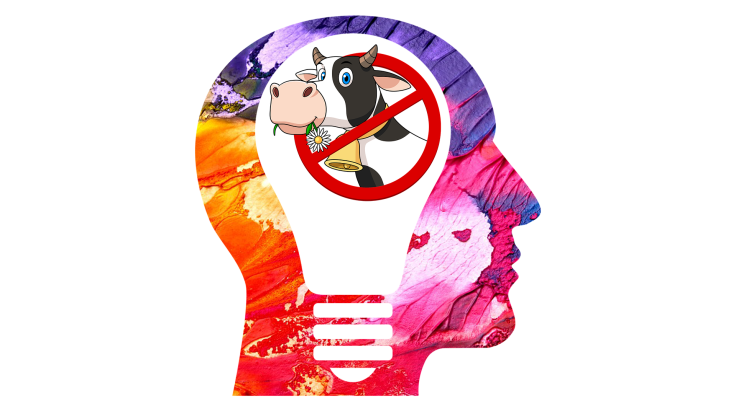“Alt-Meat” is More Than a Fad – This Industry Could Redefine the Future

The latest 3D-printed meat option is cost-effective, delicious, and – of course – meat-free
“A vegan walks into a bar; how do you know? – Oh, they’ll make sure to tell you.” These are the kind of lame jokes told to and about those who choose not to consume animals. Yes, some hard-core vegans are very preachy about their eschewing of everything animal-connected, including eggs, milk, leather, and honey. But there are also quieter vegetarians, pescatarians, flexitarians, and others who’ve come to some “inconvenient truths” about meat-eating: even ignoring any philosophical debate over the morality of what we eat, our current meat-eating habits are unsustainable. This, however, conflicts with another conclusion that’s been reached by nearly every human for literally – at least – many tens of thousands of years. Meat tastes great. Beef, in particular, is something special. It satisfies in a deep, primal way. Can these two clashing facts be reconciled?
The beef industry is a strong candidate for the planet’s least efficient industry. Cows drink more freshwater than all of us 7.674 billion humans living on planet Earth. Add in water resources required for processing and packaging the meat, not to mention the land area cows require, or the huge amounts of food they must be fed to become a small slab of a delicious protein-rich meal and, it’s a “resource-taxing” industry, to say the least. The world’s beef lovers chow down 50 billion kilograms of cow-based material each year, which is great news for big beef. One kilo of that beef, however, can require as much as 20,000 liters of water, and 25 kilos of feed. Oh, and it produces somewhere around 20 kilograms of greenhouse gases. –Not such good news for those hoping their grandkids aren’t forced to live on a “Waterworld” Earth. Vegans want us to go cold turkey, but can we have our cow and eat it, too? –Yes. If we’re willing to make a technological leap into 3D meat.
Right now, some are already moaning. “Nothing comes close to the real thing! I’ve tried that Yummy Burger, or whatever… not the same!” True. Not the same. This is why an Israeli start-up decided to redefine the “alt-meat” industry. The company – Redefine Meat – uses proprietary 3D printing tech that wasn’t even possible a decade ago. They’re blending this tech with “meat digital modeling,” and advanced food formulations to produce what they term: “animal-free meat with the appearance, texture, and flavor of whole muscle meat.”

“Alt-meat” (a nice rebranding as the new term puts the focus on the word ‘meat’) is by far the fastest-growing food industry segment and is expected to be worth US$140 billion annually by 2030. That’s a lot of moolah and the folks that get it right stand to make serious money. So, why does Redefine Meat think they’re going to end up stampeding through the competition – some of which are already selling their products in fast-food chains? Well, two reasons. The first is 3D printing. Once a luxury , 3D printing has finally gone mainstream, especially when it comes to cost. The time is fast approaching when 3D-printed meat is going to rate as “cost-effective.” Give 3D printing a little more time and that could change to “cheap.” Secondly, the folks at Redefine Meat aren’t trying to turn the world vegan. Instead, they’re focusing on the texture, appearance, and flavor of the real deal. Why? –Because meat tastes good!
People who chose to give up or restrict their meat consumption do so for hugely different reasons. For some, it’s religious or about cruelty, others want to avoid clogged arteries and a fatal heart attack at 65. Then there are the “trying to be a good person” folks who know the effect the meat – especially beef – industry has on the planet and feel a touch of guilt as they chomp into that tender sirloin. Quality alt-meat solutions cater to all these demographics, making it such a potentially lucrative idea. If there’s an option that tastes and feels like genuine flesh, but is 100 percent death-free, is 95 percent less environmentally impactful, and is just as cheap – or cheaper… who’s gonna have a beef with that?
Forget about the “meat makes me sick” crowd. They’re too tiny of a market to worry about. If they want to eat plain brown rice and organic tofu all the days of their lives – enjoy! “Real” alt-meat is for the 95 percent. Some of them are vegan, or vegetarian – but mostly – they’re just people who are smart enough to know things have to change, and flexible enough to give new ideas a try. More importantly, however – whatever diet they subscribe to – this overwhelming majority accepts the truth that meat tastes good. There is no logical reason to deny millions of years of evolution, and there are plenty of people who don’t eat meat that agree. “Precisely the same, entirely different” claims Redefine Meat. Most of us want the same; yet we know things need to change. Meat tastes great, however, meat is getting too costly and unsustainable to produce. But 3D-printed meat with a focus on texture and taste is a more than viable substitute. –Cool. I’ll have the 32-ounce 3D-printed Porterhouse, please.











